Understand the root cause of chronic painPain, whether acute or chronic, is the body’s way of signalling that a potential threat to our health or problem exists. Thus, determining the causes to the pain, whether it be a single cause, such as a splinter in our finger or an injury to our ankle, or it may be multiple causes of chronic back pain or headache. The key to understanding, managing, and preventing chronic pain is to determine what combination of factors are contributing to delayed recovery and the chronic pain condition. These contributing factors exist in the seven realms or domains of our lives include the Body, Lifestyle, Emotions, Society, Spirit, Mind, and Environment. Interestingly, the acronym for these seven realms is BLESS ME.
| 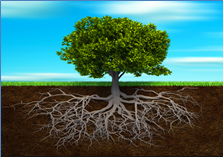 |
Balance between risk and protective factorsRisk factors are vices or characteristics such as poor sleep, depression, tense postures, or smoking that increases the possibility of illness, injury, and chronic pain. Protective factors are virtues, characteristic, or conditions, such as exercise, healthy diet, social support, helping others, and happiness, that prevents or reduces vulnerability for the development of chronic pain. To understand chronic pain, we need to identify both the risk factors and protective factors that we do every day. To prevent chronic pain, we need to reduce risk factors and strengthen protective factors. | 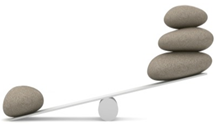 |
Chronic pain cyclesBoth risk factors and protective factors are often inter-related in the patterns of our daily life. We all know the phrases “what goes around comes around” and “one thing leads to another.” These reflect an understanding that we all have patterns or cycles to our daily lives. Sometimes these cycles can lead to chronic pain and other illnesses. Each element of a cycle generates a change, which causes feedback to the cycle and perpetuate or reverse it. Thus, each realm of our daily lives are connected to the others and influences whether chronic pain is sustained or improved. It is not we what do one time but rather repeated determines if chronic pain develops or not. For example, conflicts with someone (social) may lead to anger (emotion), poor sleep (lifestyle), increase muscle tension (body), and increase in pain. Pain is part of the cycle and becomes chronic if each factor continues regularly to perpetuate the cycle and the continued pain. Positive feedback triggers a continuation of the cycle while negative feedback leads to a discontinuation of the cycle. This is often referred to as self-reflexive or circular causation. Positive and negative feedback cycles play an important role in sustaining balance in person’s health or illness over time. With chronic pain, each factor in the cycle needs to be recognized and changed to reversing the cycle and the chronic pain. | 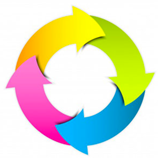 |
Focus on protective factors to enhance wellnessPreventing chronic pain is as much about living a healthy lifestyle with ample daily protective factors than it is abut reducing the risk factors that lead to chronic pain. Strengthening protective factors such as exercise, eating and sleeping well, helping others with social support, being clean and organized have three advantages over simply reducing risk factors;
Thus, most effective strategies for preventing and managing chronic pain, is doing those little things every day that improve our health and wellness through protective factors. Protective factors such as maintaining range of motion with stretching, conditioning exercise, good posture, sleeping well, resolving conflicts, and balanced lifestyles can help us stay in top shape and prevent chronic pain. |  |
Know thyselfSocrates, the greek scholar, stated in 400 BC “Know thyself first.” To achieving health and wellness, we need to know ourselves and our daily lives. What we do on a regular basis will determine whether we maintain health or lead us down a path of pain and illness. Although there are some aspects of our lives such as genetics, environment, and plain old luck that are out of our control, research has suggested that these inherent factors only effect about 20% of our health. In contrast, research suggests that healthy activities within each of the seven realms of our lives are the major determinants of health, wellness, happiness, and enjoyment of life. We need to recognize what these factors are and enhance them. | 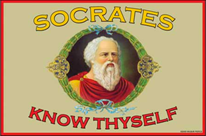 |
Who am I? Take the assessmentThis information is designed to help prevent chronic pain by making small changes in the 7 realms of your life. It includes self-assessments, setting goals, and personalized self-management recommendation with educational materials to help prevent chronic pain. There are three questionnaires that are part of the Seven Realms Assessment.
Click here to take the assessment. |  |
Change the little thingsPreventing chronic pain is about making many small changes one time at time that are sustainable will have the greatest lasting impact. Here are some reminders to follow that will help you make change easy and improve success;
| 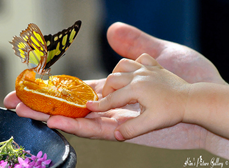 |
Understand the big picture“The good physician treats the disease; the great physician treats the patient who has the disease…Thus, it is much more important to know what sort of a patient has a disease than what sort of a disease a patient has.”- Sir William Osler. Human Systems theory has its roots in both historical concepts of health care but also the Biopsychosocial Medical Model, as first proposed by Engel in 1977. To understand the balance between health and illness, we need to look at the whole person and not simply the physical pathology. The whole, then, becomes greater than the sum of its parts. Human system theory suggests that we have seven realms of our lives and each play a role in health and wellness. Each realm of our lives include both risk and protective factors that contribute to health or illness. They include the mind, body, and spiritual realms that interact with the social and physical environment through behavioral and emotional processes. In each realm of our lives (Table. 1), there is a duality that reflects positive and negative states or energy. Thus, risk factors have a negative affect on health while protective factors are positive influence on health. | 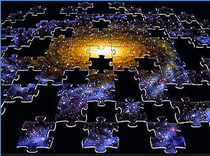 |
| Table 1. Self-management paradigms are associated with transformative care and a human system’s approach to preventing chronic pain | |
|---|---|
| New paradigm | Statement that shifts to the new paradigm |
| Understand the whole patient | We will help you identify all diagnoses, risk factors, and protective factors associated with your condition |
| Each person is complex | Multiple conditions and inter-related contributing factors may initiate, result from, increase risk, or decrease risk of illness and chronic pain. Each need to be addressed as part of strategy for preventing chronic pain |
| Self-responsibility is key to recovery | You have more influence on the problem than any treatment provided. Will you take ownership and control of the condition |
| Self-care | You will need to make daily changes in order to improve your condition. |
| Education and training | We can teach you what changes to make and how to make these changes. |
| Long-term change | Change only occurs over time and it may take months for the changes to have a large impact on reducing pain and symptoms. |
| Strong provider-patient partnerships | We as health professionals will support you as you make the changes. |
| Personal motivation | Will you be able to make the changes need? |
| Social Support | You may need help from others to make these changes. |
| Fluctuation of progress | Expect ups and downs during the recovery process. |
| Table 2. Description of the seven realms in human systems approach to preventing chronic pain (To facilitate remembering, the acronym is BLESS ME) | |||
|---|---|---|---|
| Realm | Description | Protective Factors | Risk Factors |
| Body | Physical and physiologic structures | Balanced relaxed posture, stretching, strengthening, and conditioning exercise | Poor posture, tight weak muscles, hypo- or hyper-mobile joints, poor conditioning, injury, genetic risk, and co-morbid conditions. |
| Lifestyle | Behaviors and actions | Protective diet, steady pacing, being active, regular sleep, low risk behaviors, and compliance with protective actions | Poor diet, sedentary life, prolonged sitting, poor sleep, hurrying/ rushed, repetitive strain, high-risk behaviors, chemical use. |
| Emotions | Feelings we experience | Sustained positive emotions such as feelings of joy, excitement, confidence, optimism, happiness, and contentment | Prolonged negative emotional experiences anger, anxiety, sadness, and depression. |
| Society | People around us | Positive relationships, social support for health, regularly helping others, i.e. family, friends, colleagues, community. | Poor relationships, routine conflict, abuse, post-traumatic stress, low social support, secondary and tertiary gain |
| Spirit | Beliefs and purpose | Self-compassion, self-esteem, purpose, direction, beliefs, faith, love, hope, gratitude | Stress, burnout, hate, low-self esteem, disbelief, doubt, lack of purpose, loss of faith, hopelessness |
| Mind | Thoughts and attitudes | Whole understanding, resilience, self-efficacy and self-control, accepting responsibility, realistic expectations, and active coping. | Ignorance of problem, low resilience, low self-efficacy/ control, deny responsibility, poor compliance, unrealistic expectations, and passive coping. |
| Environment | Physical and natural environment | Clean, organized, safe environment and an approach that protective, cautious, and careful. | Living within an unclean, chaotic, and disorganized environment with an approach that is negligent, dangerous, increase risk of injury and accident |

